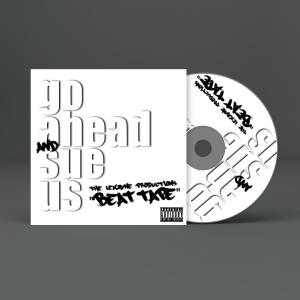7 Ways to Build a Brand Using Blogs
7 Ways to Build a Brand Using Blogs
Branding is more than just a business buzzword. It has become the crux of selling in the new economy. If the old marketing mantra was “Nothing happens until somebody sells something,” the new philosophy could be “Nothing happens until somebody brands something.”
If you are not currently getting the results you want from your branding efforts, a blog is one tool that can help.
1. Build Your Brand by Creating an Online Persona
One of the goals in creating a branding strategy is to achieve what’s known as a “franchise in the mind.” When you think of soft drinks, what jingle comes to mind? In my day, it was “Things go better with Coke.” How about insurance? Remember the slogan, “You’re in good hands with Allstate?” How about buying books online? Do your fingers automatically start typing Amazon.com? And so it goes. These companies have spent billions achieving that franchise in the mind.
What if, in your particular market, when people think of [insert a product name here], your company comes to mind? Better yet, what if you did not have to spend a fortune to do it? In today’s information-overloaded market, brand building is more important than ever, and a blog is one way to help achieve this goal.
Blogs enable you to “tell the story” of your brand over and over again, allowing customers to become both familiar and comfortable with it. Someone referred to blogs this way: “A blog is like an ongoing tour with a guide you get to know.” Manifesting your brand with a blog allows for personalization. It puts a human face on the brand.
2. Build Your Brand by Promoting Conversations
Blogging is about engaging in conversation. It facilitates a dialogue with the consumer. Consumers can get to know you through this personal interaction. As they get to know you, they come to like you and, even better, they come to trust you.
3. Build Your Brand Through Word of Mouth Marketing
Not only will consumers talk to you via your blog, they will also talk to one another. Your readers can become your best brand-building evangelists, helping you to spread your message and your presence throughout their networks. We call this viral, or word-of-mouth, marketing.
The best marketing that ever was, is — or ever will be — is word of mouth. There is no dollar value you can assign to having someone else talk positively about you, your company your services.
4. Build Your Brand Through Connections
One of the biggest advantages to using blogs is connecting in personally powerful ways with your target audience. By establishing deeper relationships, you are able to effectively influence how people think and feel about you and your business. Your connection is what will create your blog’s greatest success.
How do you make these vital connections? By being yourself, sharing what you know — your expertise and experience — and injecting some of your personality into the mix as well. You don’t have to be a professional writer to accomplish this, either. Part of the fun of blogging is that it doesn’t require a degree in journalism. It does require honesty, transparency, and a heartfelt desire to share something that will benefit readers. If you can do this, you will connect!
5. Build Your Brand by Creating Communities
Everything I have said about blogs can also be applied to social networks like Facebook and LinkedIn. These sites allow individuals to coalesce around a given topic or issue of shared interest. Even if your blog serves as your social media headquarters — the digital center for content creation — it is wise to syndicate that content into such networks.
Those mega-networks are not the only place community can be created, either. You can build community around your brand by adding a peer-to-peer layer using tools such as message boards, customer ratings and reviews, user groups and profiles. Social network platforms like KickApps, Ning and CrowdVine are designed with this very purpose in mind.
6. Build Your Brand Cost-Effectively
Yet another reason that blogs are good brand-building tools is that they are inexpensive to deploy. Depending on the blog platform chosen, you can spend as little as nothing. For example, Blogger, the blog platform owned by Google, is free. So is the dot com version of WordPress. Just remember that you get what you pay for. As your knowledge of blogging and blog tools increases, you’ll most likely find that few free solutions provide the ability to customize a blog with the degree of professionalism you require.
7. Build Your Brand by Partnering with Customers
New media channels such as blogs and social networks have wrestled control over the brand away from the company and put it in the hands of consumers. As a result, postmodern branding, with its implications of distributed power, has emerged.
Smart companies realize that their brand is actually created by their audience, not by their resident “branding expert.” The true “brand” of an organization will emerge from interactive market conversations among consumers. Smart companies will embrace this new reality and become partners with their customers in creating company brands. A blog is a good place to get started in creating such a partnership.
Leave a comment below to let us know what you think.
Related posts:
Cart
Products
-
 Go Ahead And Sue Us - Beat Tape (Tester)
Go Ahead And Sue Us - Beat Tape (Tester)
$5.00$0.00 -
 Go Ahead And Sue Us - Beat Tape
Go Ahead And Sue Us - Beat Tape
$5.00$0.00 -
 Silicone Wristband
$2.00
Silicone Wristband
$2.00
-


